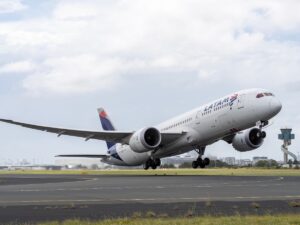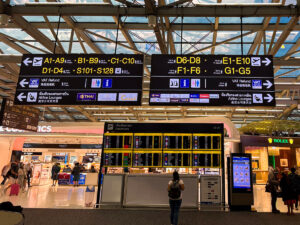
Just a few years ago, Finland’s geographical location was a huge strategic advantage for Finnair, a member of the Oneworld alliance. Its business model revolved around its ability to offer short travel times and efficient connections between Europe and Asia, via its hub airport in Helsinki.

Unfortunately for Finnair, COVID-19 decimated demand for travel to and from Asia. Then, just when demand started to return, Russian and Ukrainian airspace suddenly became unusable due to the war and associated sanctions.
For reasons beyond its control, Finland’s geography turned into a major disadvantage for the country’s national carrier.
Flight times from Helsinki to Asia needed to be extended by 15-40% in order to avoid Russian airspace. Flights from Helsinki to Japan, for example, reverted to taking a polar route over the North Pole – like they did back in the 1980s when Soviet Union airspace was off-limits. This not only increased fuel costs, but meant more aircraft were needed to serve the same set of routes to Asia.
This perfect storm had the potential to create an existential crisis for a medium-sized airline like Finnair.
But the airline is not sitting idly. Instead, Finnair is nimbly reinventing its entire business model. It has come up with a clear plan to not only survive, but return to profitability within the next two years.
“The closed Russian airspace will significantly affect Finnair’s ability to make a profit in the long term, and in September, we announced our new strategy to restore profitability,” Finnair CEO Topi Manner said last month.
“Key actions to achieve this goal are a geographically more balanced network, fleet optimisation, strengthening of unit revenues, utilisation of partnerships, reduction of unit costs, building a sustainable balance sheet, and sustainability.”
A “geographically more balanced network”
Before COVID-19, Finnair flew from Helsinki to many secondary cities in Japan and China including Sapporo, Fukuoka, Nagoya, Chongqing and Nanjing. Sadly, these routes are no longer viable and have been discontinued.
Instead, Finnair has adjusted its route network to focus on other destinations that are not as impacted by the loss of Russian airspace. In 2021, it set up a long-haul base in Stockholm and operated flights from the Swedish capital to destinations in the USA and Thailand.
The Stockholm base ended up being relatively short-lived as these routes are no longer operating. But Finnair has recently added new long-haul routes from Helsinki to Seattle, Dallas/Fort Worth and Mumbai. These destinations can be reached from Helsinki without large detours.
A new partnership with Qatar Airways
Despite launching a few new routes, Finnair still has an excess of long-haul jets at the moment. At the same time, its Oneworld partner Qatar Airways now has a shortage of aircraft (partially due to an ongoing dispute with Airbus).
The two Oneworld partners are now helping each other out, with Finnair last week launching direct flights from Stockholm and Copenhagen to Doha. Finnair will also launch Helsinki-Doha flights after the FIFA World Cup and it has hinted it will soon offer a fourth route from Scandinavia to Doha.
The new Finnair flights to Doha are timed to easily connect to Qatar Airways flights bound for Africa, Asia and Australia. They are being operated by Finnair’s refurbished Airbus A330 aircraft with Premium Economy and the new Business Class AirLounge seat.

Finnair has also just started offering tickets from Australia to Europe via Doha. Passengers can now fly from Australia to Doha on a Finnair codeshare flight operated by Qatar Airways, and connect onwards with Finnair from Doha to Helsinki, Copenhagen or Stockholm. This routing can even be used as part of a Finnair round-the-world ticket!
Wet leasing aircraft to other airlines
With so many spare aircraft, Finnair has also been wet leasing planes and crew to other airlines.
Over recent months, Finnair has been operating many trans-Atlantic flights on behalf of Eurowings Discover, a new low-cost long-haul airline owned by Lufthansa Group. Finnair also operated some short-haul flights for British Airways during the busy European summer season.
These measures have allowed Finnair to utilise its spare aircraft in the short term. But Finnair has ultimately decided to reduce its fleet size over the coming years.
Still a long road to recovery
After several years of heavy losses, Finnair’s financial position did improve over the recent European summer period. The airline reported its first quarterly comparable operating profit since 2019, although it still made a net loss for the period.
“A positive operating result in the seasonally strongest third quarter is a step to the right direction, but we have a long journey ahead of us to nurse the company back to health,” Manner said.
“Due to the combination of the heavy pandemic and the closure of Russian airspace, we are facing a uniquely difficult challenge. Thus, determined measures to implement our new strategy and to restore profitability at an annual level are vital.”
You can leave a comment or discuss this topic on the Australian Frequent Flyer forum.















































































Community Comments
Loading new replies...
Join the full discussion at the Australian Frequent Flyer →